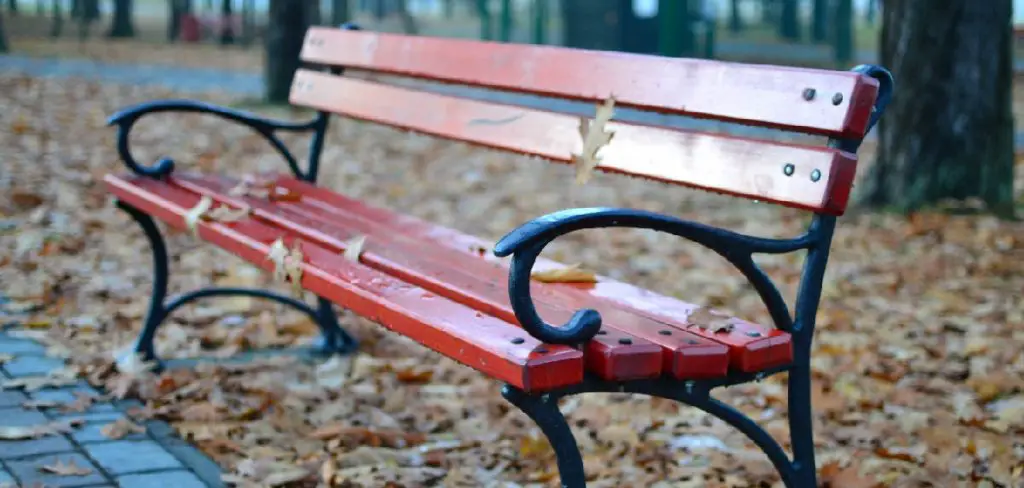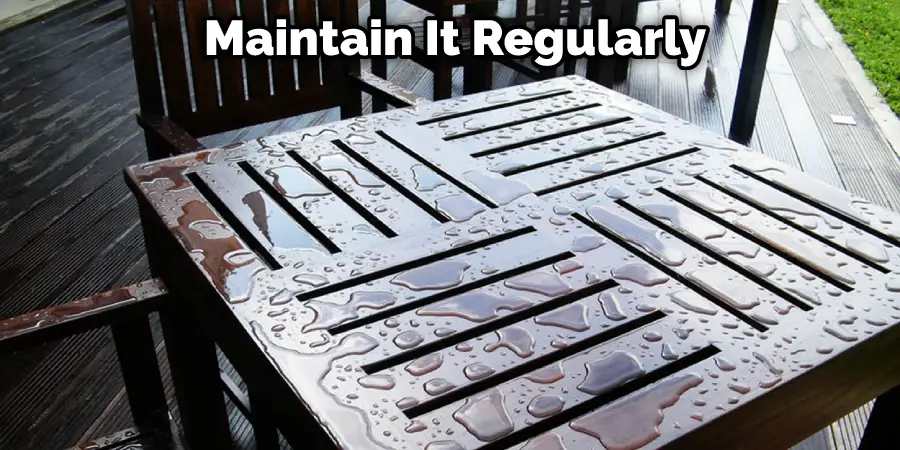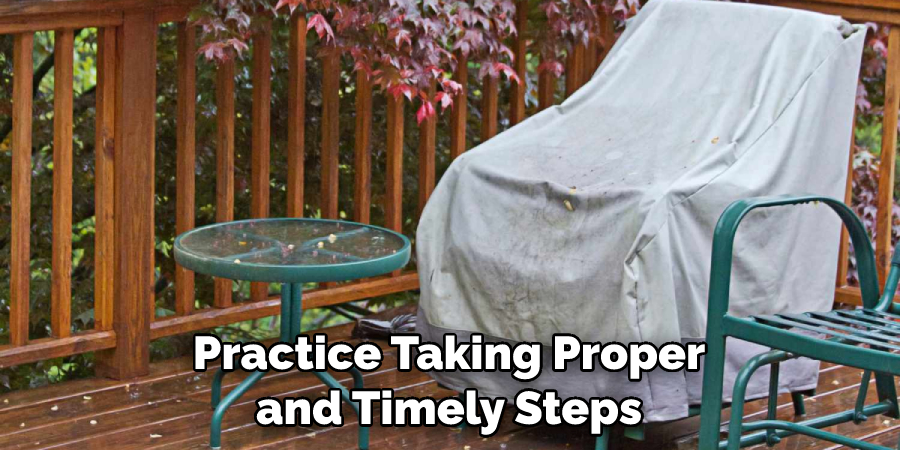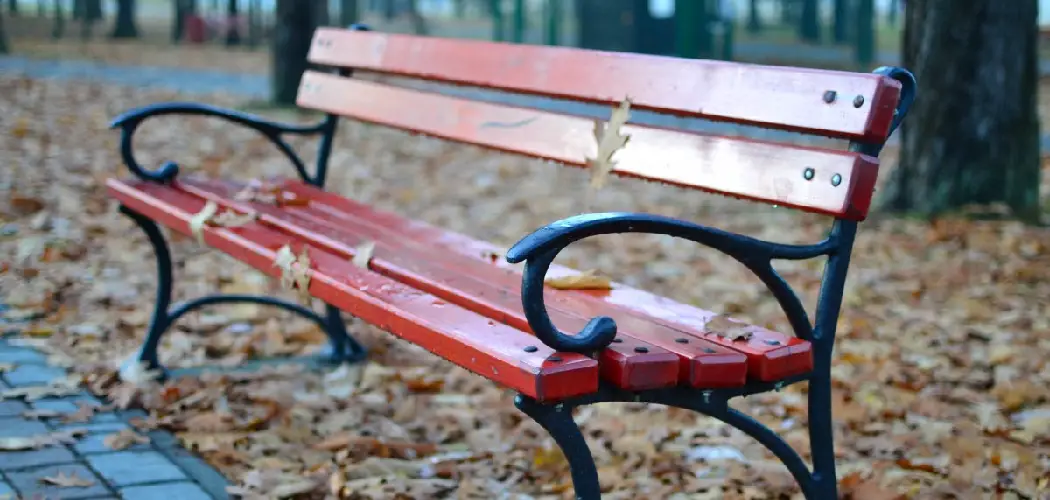Have you ever had a piece of wood furniture get drenched in water and wondered how to salvage it? Is your wood furniture feeling damp and drab?

Finding yourself at the wits’ end when it comes to drying out wet wood while keeping the integrity of its structure intact? It can be extremely frustrating trying to figure out what to do when your favorite wooden table, chair, or dresser takes on more liquid than it should.
In this blog post, we will provide tips on the best ways to properly dry wet wood furniture so that you can restore its original luster without damaging it further. With our comprehensive guide on how to dry wet wood furniture, you will have everything you need to bring back drenched pieces of the past into their former glory.
Keep reading for an informative walkthrough on exactly what steps should be taken in order to effectively dry out all kinds of wooden pieces! With our easy-to-follow instructions and expert advice, fixing up your moisture-damaged item will become a much simpler process!
Reasons You Need to Dry Wet Wood Furniture
If you experience flooding, the first thing you should do is to make sure your furniture isn’t sitting in standing water. Wet wood can be extremely susceptible to damage from moisture and mildew growth, so it is important to take steps as soon as possible to prevent further problems. Some of the reasons why drying out your wet wood furniture may be necessary include:
- To prevent the growth of mold, mildew, and bacteria.
- To keep your furniture from warping or cracking due to the moisture content.
- To avoid having water stains permanently marring the surface of your item.
- To protect any finishes that may have been applied to the wood from being affected by moisture.
Important Factors to Remember Before Drying Wet Wood Furniture
1. Wood Type
Different types of wood have different responses to water, so it is important to know the kind of wood you are dealing with before attempting any drying-out procedures. You need to determine if the wood is softwood or hardwood, as different techniques may be needed for each one.
2. Moisture Level

When dealing with wet wood furniture, you need to determine how much water has been absorbed into it in order to know what steps should be taken next. Over-drying the item can cause it to become brittle and weak, so it is important to make sure that the furniture has dried out enough but not too much.
3. Finish Type
The type of finish on your piece will also determine how you can proceed with drying it out. If the item has a wax or oil finish, for example, then drying methods should be adjusted accordingly in order to keep the finish intact.
Now that you know more about the important factors to consider before drying out wet wood furniture, it’s time to look into what steps should be taken to get the job done. Keep reading for instructions on how to dry wet wood furniture like a pro!
Required Items
- Vacuum cleaner
- Towels
- Fan (optional)
- Dehumidifier (optional)
10 Ways How to Dry Wet Wood Furniture
1. Remove Excess Water
The first step in drying out wet wood furniture is to remove as much of the excess water as you can. This can be done with the help of a vacuum cleaner. Use it to suck up any standing water on the surface and in any cracks or crevices.
2. Absorb Moisture with Towels
After you have removed the excess water, you can further absorb the remaining moisture by laying down some towels. Place them over the affected area and let them sit for several hours in order to draw out as much of the wetness as possible.
3. Use a Fan
If you have access to a fan, it can be used to speed up the drying process. Place it near the wet area and set it on a low setting in order to circulate the air around the furniture and help evaporate any remaining water.
4. Use a Dehumidifier

A dehumidifier can also be used to dry out wet wood furniture more quickly. Set it up close to the item and turn it on in order to help draw out any moisture from deep within the wood. It will also help reduce the humidity in the room, which can further aid in the drying process.
5. Keep It Out of Direct Sunlight
When drying out wet wood furniture, it is important to remember not to place it directly in the sun. Doing so can cause discoloration or even warping, as too much heat and light can damage the wood.
6. Increase Air Flow
In order to help dry out your wet wood furniture more quickly, you can open windows and doors in the room to increase airflow. This will allow fresh air to circulate around the item and help it dry faster.
7. Avoid Heat Sources
While increasing air flow is important for drying out the furniture, it is equally important to avoid any heat sources such as a radiator or heater. Heat can cause the wood to shrink and warp, so it should be avoided at all costs.
8. Dry Slowly
The best way to dry out wet wood furniture is slowly. Avoid using excessive heat as this can damage the item, and don’t rush the process as this can result in cracking or even warping.
9. Monitor Humidity Levels
It is important to keep an eye on the humidity levels in the room when drying out your wet wood furniture. Try to keep it between 30 and 50 percent for optimal results.
10. Regular Maintenance
Once your wet wood furniture is completely dry, it’s important to maintain it regularly. Regularly dusting, polishing, and wiping down the item can help keep it looking its best for years to come.

Following these steps on how to dry wet wood furniture will ensure that you are able to dry out your wet wood furniture properly and efficiently. Not only will this help protect the item from further damage, but it will also help maintain its beauty and integrity for years to come. Whether you are dealing with a minor spill or serious water damage, these steps will help you get your furniture back in shape in no time!
8 Maintenance Tips for Drying Wet Wood Furniture
- Dry the furniture outdoors in a shaded area. This is an ideal way to dry wet wood furniture, as it allows air to circulate freely and helps the item dry quickly. Choose a spot away from direct sunlight, as the sun’s rays can cause cracking and warping.
- Remove all of the furniture’s cushions or padding if possible. This will allow air to circulate freely around the entire piece of furniture, helping it to dry faster. It is essential to dry the cushions separately, so hang them up outside or place them in a sunny spot indoors.
- Clean any dirt and debris off of the furniture before drying it. Wet wood can actually trap dirt and dust particles more easily than dry wood, which will cause discoloration over time. Use a soft cloth with mild soap and warm water to gently clean the piece.
- Run a fan or dehumidifier nearby to help dry the furniture more quickly. The air should not be too hot, as this could cause further damage to the wood.
- Use a warm blow-dryer on a low setting to remove moisture from hard-to-reach areas of the furniture. Be sure to move the dryer around constantly and never hold it in one spot for too long, as this could cause potential damage.
- Spread wood-drying powder on the furniture if necessary. This type of powder is available at most hardware stores and works by rapidly absorbing moisture from wet wood. It would be wise to test a small area first, as some powders can discolor the furniture.
- Wipe down the furniture with a cloth dampened with mineral spirits. This will help remove any remaining moisture and also help protect the wood from warping or cracking in the future. Wiping the piece down with furniture oil afterward is also recommended.
- Leave the furniture out to dry for several days before using it again. Check periodically to make sure that it has dried fully, and use a dehumidifier if needed. Once it is completely dry, you can then treat the wood with furniture polish and place cushioning material back on the furniture.

With proper care, your wood furniture should remain in good condition for many years to come.
Following these steps will help to ensure that your wet wood furniture dries quickly and safely.
Frequently Asked Question
How Long Will It Take to Dry Wet Wood Furniture?
The amount of time it takes to dry wet wood furniture depends on the size and thickness of the item, as well as how much water has soaked into it.
Generally speaking, small items such as chairs or tables can take a few hours to dry completely, while larger pieces such as dressers may take several days or even weeks. It is important to also factor in the environment of the room in which the item is drying, as this will affect how quickly it dries.
Can I Use a Hairdryer or Heat Gun to Dry Wet Wood Furniture?
No, you should not use a blow dryer, heat gun, or any other heat source to dry wet wood furniture. Heat can cause warping, cracking, and other damage to the wood. Instead, only use fans or dehumidifiers to circulate air throughout the room.

Conclusion
All in all, knowing how to dry wet wood furniture is key in order to extend the lifespan of your furniture. You must remember that prompt action and quick drying are a necessity, particularly when major spills occur.
If you practice taking proper and timely steps when any liquid seeps into your wooden furniture and arm yourself with the right materials, knowledge, and techniques as outlined here, you should have no problem restoring full functionality and beauty to your wet wood furniture.
Always remember to err on the side of caution; when it comes to saving your cherished possessions from water damage, oftentimes, it’s better to be safe than sorry. Waterlogged or discolored wood may not look or feel its best now, but thankfully repairing it isn’t completely impossible – with a bit of know-how and elbow grease, you can make your wooden treasures look good as new!

